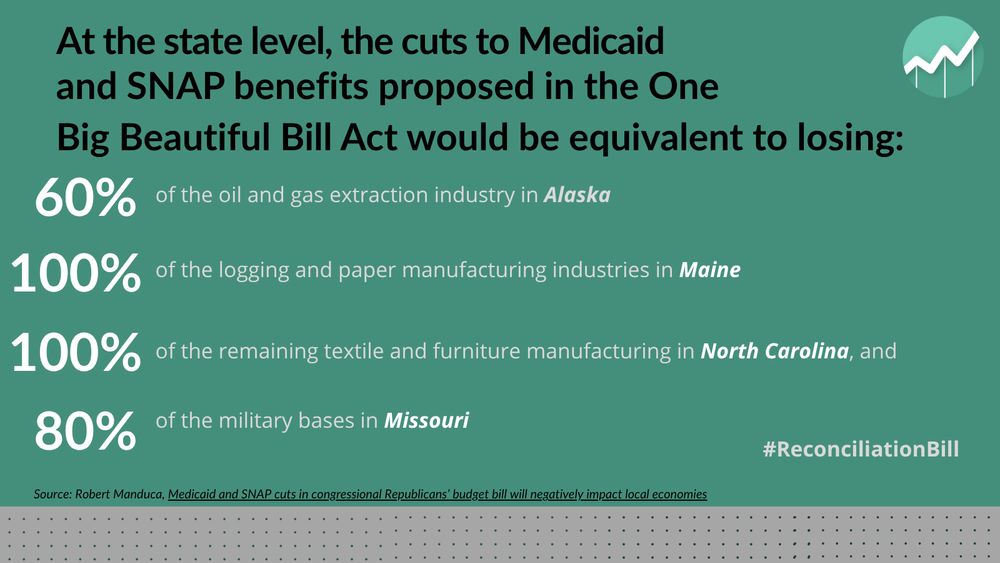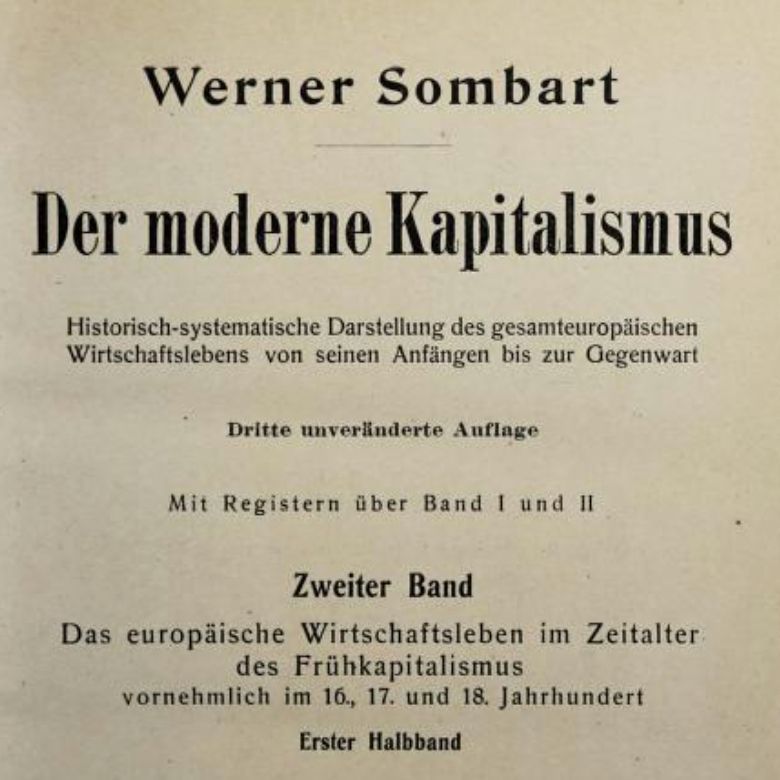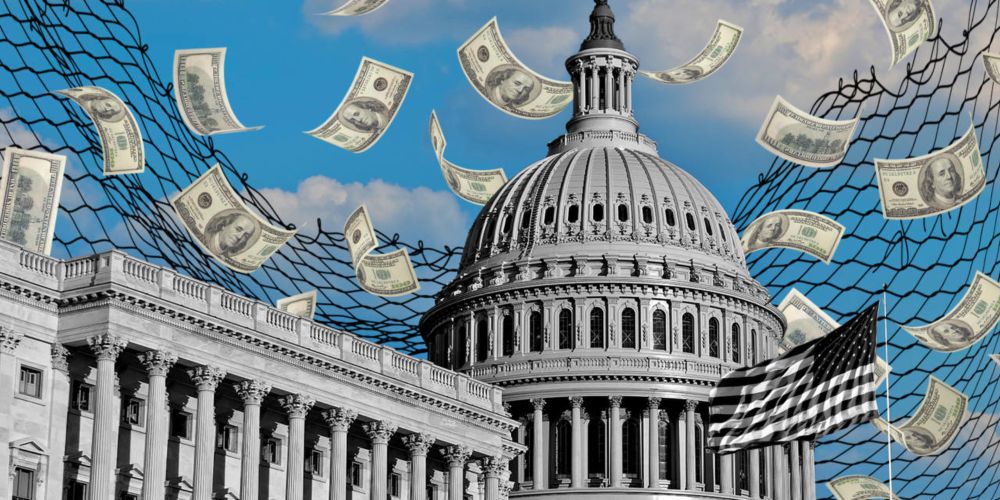
Support Bolts
We are a nonprofit publication that covers the nuts and bolts of political change, from the local up, and we need reader support to build our journalism.
You can help Bolts continue to provide crucial coverage of local elections. Here's how:
- Repost this = I donate $1.
- Follow @boltsmag.org = I donate $1.
- Donate (link below) + tell me how much = I match your donation.
(Donate monthly = I match a year's worth)
03.12.2025 18:20 — 👍 364 🔁 867 💬 29 📌 35
Cool new article alert 🚨: Tax Base Fragmentation as a Dimension of Metropolitan Inequality by @robertmanduca.bsky.social, @bhighsmith.bsky.social, Jacob Waggoner.
academic.oup.com/ser/article/...
05.12.2025 16:57 — 👍 5 🔁 1 💬 1 📌 0
Love seeing this use of our tax base fragmentation viz!!
01.12.2025 19:00 — 👍 12 🔁 4 💬 1 📌 0

🚨We analyzed 138 million geocoded property tax records to quantify how municipal boundaries spatially overlap onto economic segregation in every US metro area—creating disparities in localities’ ability to fund public goods. And we made an interactive map of our results! [1/16]
24.11.2025 16:31 — 👍 291 🔁 138 💬 8 📌 29
Check out this 🧵 on our own @robertmanduca.bsky.social's work with @bhighsmith.bsky.social and Jacob Waggoner. 👇 #AcademicSky #WealthInequality
25.11.2025 13:20 — 👍 14 🔁 9 💬 0 📌 0

Tax base fragmentation as a dimension of metropolitan inequality
Abstract. The United States devolves responsibility for providing critical services to local governments. With limited centralized transfers, the ability t
We conceptualize ‘tax base fragmentation’: the spatial concentration (within a metro area) of property wealth in particular wealthy municipalities. The concept is intuitive—but not captured by existing measures of segregation and jurisdictional fragmentation. Link: academic.oup.com/ser/advance-...
24.11.2025 16:31 — 👍 25 🔁 5 💬 1 📌 0
Check out our new paper (+ the accompanying web viz)!
25.11.2025 16:27 — 👍 25 🔁 7 💬 0 📌 0
A new working paper from @umichstonecid.bsky.social/SRC researcher @robertmanduca.bsky.social examining the geography of social transfer programs & implications for cuts to Medicaid & SNAP in the recently signed federal budget.
Also see: equitablegrowth.org/medicaid-and...
07.07.2025 16:25 — 👍 7 🔁 2 💬 0 📌 0
Hey that's @robertmanduca.bsky.social's research!
03.07.2025 13:28 — 👍 13 🔁 4 💬 0 📌 0

Medicaid and SNAP cuts in congressional Republicans’ budget bill will negatively impact local economies
New research shows how cuts to Medicaid and other social programs negatively impact local economies as well as program beneficiaries.
...
58% of military in CA-22 (Valadao)
223% of water transport (Staten Island ferries! largest private industry in district) in NY-11 (Malliotakis)
100% of pipeline transport in TX-15 (De La Cruz)
equitablegrowth.org/medicaid-and... h/t @robertmanduca.bsky.social @equitablegrowth.bsky.social
02.07.2025 14:54 — 👍 2 🔁 1 💬 0 📌 0

"Cuts to social programs will have a major impact on local economic activity." Social programs are a key part of the regional economic base. @robertmanduca.bsky.social on how Medicaid and SNAP cuts in the #ReconciliationBill will negatively impact local economies:
equitablegrowth.org/medicaid-and...
02.07.2025 13:03 — 👍 4 🔁 3 💬 0 📌 0
Starting in 10 minutes!
27.06.2025 14:51 — 👍 5 🔁 0 💬 0 📌 0
A lot of the discussion of the reconciliation bill has focused--rightly--on the consequences for beneficiaries of these programs. 11 million people are at risk of losing Medicaid coverage, and 4.5 million stand to lose SNAP. That's a ton. But the economic impacts may be even more widespread
25.06.2025 18:15 — 👍 18 🔁 6 💬 0 📌 0

Opinion | My Journey Deep in the Heart of Trump Country
In Kentucky's 5th congressional district, recently profiled by Arlie Hochschild for @nytimes.com, Medicaid makes up a quarter of the entire economic base. The SNAP and Medicaid cuts would be like losing one-third of all traded private sector industries
www.nytimes.com/2025/06/09/o...
25.06.2025 18:13 — 👍 19 🔁 9 💬 1 📌 0


If we look just at the proposed *cuts* to Medicaid and SNAP, it's the economic equivalent of Maine losing its entire forestry and paper manufacturing industries, all at once--or Alaska losing 60% of its oil and gas industry.
25.06.2025 18:07 — 👍 28 🔁 11 💬 1 📌 2

Put another way, Medicaid contributes roughly as much to Detroit's economy than car manufacturing, more to Houston than the chemical industry, almost twice as much to Los Angeles as motion picture production--these are big numbers!
25.06.2025 18:03 — 👍 93 🔁 42 💬 2 📌 4

Estimated Budgetary Effects of H.R. 1, the One Big Beautiful Bill Act
As passed by the House of Representatives on May 22, 2025
Shifting from economic geography to policy, what does this mean for the current reconciliation bill? The House version is set to cut Medicaid and SNAP by about $1.2 trillion over the next 10 years--that's roughly a 12% cut to Medicaid and 27% to SNAP www.cbo.gov/publication/...
25.06.2025 17:58 — 👍 6 🔁 1 💬 1 📌 0

The Great Transfer-mation - Economic Innovation Group
Explore your community’s reliance on government transfers through EIG’s Great Transfer-mation Project.
What's driving the change? @innovateeconomy.bsky.social reported last fall about the "Great Transfer-mation" across the US, attributing it to 1) aging populations, 2) rising healthcare costs, and 3) slower earnings growth eig.org/great-transf...
25.06.2025 17:53 — 👍 4 🔁 0 💬 1 📌 0

In some parts of Florida--looking at you, Cape Coral--traditional traded industries make up just *5 percent* of the economic base. The rest of the economy is based on retirement savings, pensions, Social Security, Medicare, etc.
25.06.2025 17:50 — 👍 17 🔁 1 💬 1 📌 0
Financial income made up another 26%. Traded sector earnings were just 24%: less than either of the other sources, and down from 35% in 2001
25.06.2025 17:44 — 👍 2 🔁 0 💬 1 📌 0

I compute the share of *all* economic base income that comes from transfers, financial income, and earnings in traded industries (the standard definition). The results are pretty striking: in 2022, transfer payments accounted for *40 percent* of the economic base across US regions
25.06.2025 17:42 — 👍 5 🔁 1 💬 1 📌 0

Usually, researchers define the economic base = traded industries only. But selling products to other cities or countries isn't the only way money can enter a local economy. I explore two other sources: financial income and government transfers. Like exports, these payments sustain the local sector
25.06.2025 17:40 — 👍 4 🔁 0 💬 1 📌 0

The Economic Performance of Regions
P ORTER M. E. (2003) The economic performance of regions, Reg. Studies 37 , 549-578. This paper examines the basic facts about the regional economic performance, the composition of regional economi...
The two sectors play different roles in the local economy: most residents are employed by the local sector, which typically accounts for about 2/3 of jobs. But the traded sector is the ultimate foundation of a region's economic viability--its economic base
www.tandfonline.com/doi/abs/10.1...
25.06.2025 17:32 — 👍 5 🔁 0 💬 1 📌 0

Other industries--some examples are restaurants, grocery stores, home construction, mechanics--serve local, not national/global demand. These are the "town fillers," now usually called the "local" or "non-basic" sector
25.06.2025 17:29 — 👍 5 🔁 0 💬 1 📌 0

Basically, some industries--think manufacturing, farming, etc., but also film production or high finance--sell their products on national or global markets, bringing money into their local economies. They're the "town builders", which modern scholars call "traded industries" or the "basic sector"
25.06.2025 17:24 — 👍 3 🔁 0 💬 1 📌 0

The starting point is Economic Base Theory--a classic concept in economics and geography going back at least to Werner Sombart's 1916 classic "Der moderne Kapitalismus", which made the distinction between "town builders" and "town fillers"
25.06.2025 17:14 — 👍 3 🔁 0 💬 1 📌 0

Financial and Transfer Income as Components of the Regional Economic Base
Government transfers and financial income form a major component of the basic sector in the United States.
New working paper alert! Posted at @equitablegrowth.bsky.social, it investigates the economic geography of social transfer programs and financial income--with implications for the Medicaid and SNAP cuts proposed in the reconciliation bill 👀
equitablegrowth.org/working-pape...
25.06.2025 17:07 — 👍 50 🔁 25 💬 2 📌 4

Medicaid and SNAP cuts in congressional Republicans’ budget bill will negatively impact local economies
New research shows how cuts to Medicaid and other social programs negatively impact local economies as well as program beneficiaries.
Reductions to essential public programs in the budget reconciliation bill impact more than beneficiaries. They affect key service providers, local businesses, and community stability.
@robertmanduca.bsky.social on Medicaid and SNAP cuts impacting local economies:
25.06.2025 13:03 — 👍 7 🔁 5 💬 0 📌 0
A blog that explores the co-constitution of law and political economy. Part of the @lpeproject.bsky.social. Subscribe to our newsletter: http://lpeproject.org/subscribe/
CRE, placemaking, transit, regionalism
Boards: WMATA, GGWash, District Bridges
Book: https://www.brookings.edu/books/hyperlocal/
Bio: https://www.brookings.edu/people/tracy-hadden-loh/
Sociologist at Roskilde University researching social inequality in education, parenting, and the interplay between genetics and the social environment.
Changing the world for the better through world-class social science research and education. https://www.ucl.ac.uk/ioe/departments-and-centres/ucl-social-research-institute
Reporter @nytimes Find my work at nytimes.com/by/Ronda-kaysen
I'm a journalist, teacher and scientist. I make explainers and interactive graphics.
aatishb.com
nytimes.com/by/aatish-bhatia
Transit planning & geospatial analysis
Ed Bacon fan | 平均地权 upholder | Philadelphia maneto
Posts are mine only and don't reflect anyone else
The Urban Institute is a research-to-impact institution founded on one simple idea: To improve lives and strengthen communities, we need practices and policies that work.
Sociologist working @LMU Munich. Former FU Berlin & University of Vienna. I'm interested in social and economic inequality working on topics like taxation, (un)employment, and redistribution
https://fabiankal.github.io/
Medical Geographer & Health Services Researcher \ Wife & Mother \ Avid Reader, Foodie, & Gardener \ Cal, UChicago, & UIUC alumna \ Personal account
Sixplex enthusiast. Redwood irredentist. Lake Merritt booster. Erstwhile Prince of Prosciutto.
Cities are for people not cars. California is not full.
he etc
Ass. Prof. Public Policy @ UC Riverside | Better Cities Through Better Government | 1st Gen 🇺🇸: 🇷🇸/ Việt Nam Cộng Hòa | 躺平 | Ham chơi
stanokl.github.io | https://everyoneiswelcome.substack.com/
📍: The Inland Empire, California.
Fishtown dad, urbanist, writer, connector. Policy and Advocacy director at Build Philly Now. Co-founder @5thsq
Professor @ Harvard Law writing on property institutions, land use, private law, and eminent domain. Section 3 for life. Always half-joking. (AKA Maureen.)
The IDP is a research group at ZfK & IfP, University of Marburg, Germany. In our website (https://inq-dp.eu/) you can find more about us, our research, & our outreach activities, including the "Maps of Inequality in Marburg"
Sociology Assistant Professor @University of Georgia
Social networks, migration, inequality, computational and statistical methods
www.penghuang.me
---on a break here---
Data Team Manager at LIS Cross-National Data Center
Sociology, PhD | Dipl. Volkswirt | M.A. Social Policy
Pension policy and data | own opinion
Political scientist and evaluator. Comparative political parties; survey methods; program evaluation. Always willing to talk about food. Views are my own only.
@Leavittalone from Twitter . Writer and cartoonist. Seen in The Toast, New Yorker, The Awl, The Nib, Racked, The Rumpus, The Baffler, etc. That guy you met at that party once. http://www.leavittalone.com/
Senior Editor, Anthropology & Sociology - Palgrave Macmillan (formerly OUP, DGB). Emotional support human for Murphy and Millie.





















